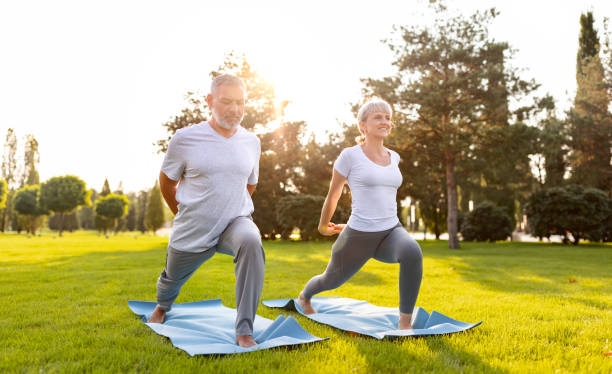Our body is made up of lean tissue, fat, bones and water. But as we reach 30, our bodies start to lose lean tissue which makes up our muscles, organs and bones. On the other hand, the amount of body fat increases steadily after 30. In fact, older individuals may have up to 30% more fat in their body compared to when they were younger, particularly in the center of the body (abdomen) and internal organs.
Other changes in the body include height loss. This occurs among males and females across all races. Once we reach our 40s, we typically lose almost half an inch (about 1 centimeter) every 10 years and this rate increases after age 70. You may be able to help prevent height loss by staying physically active, following a healthy diet, and preventing bone loss.
Men often gain weight until reaching 55, and then lose weight later on probably due to a decrease in testosterone. Women on the other hand gain weight until reaching 65, and then start to lose weight. Exercise and a healthy diet can play a crucial role in a person’s weight changes.
Another noticeable change that goes with age is slow muscle recovery. You’ll notice that after a session of Zumba or Spin class, your joints and muscles begin to ache. And unlike when you were younger, it takes days before the soreness go away.
There are things you can do to minimize any age-related body changes and they are:
- Exercise regularly.
- Maintain a healthy diet consisting of protein, whole grains, healthy fat, fruits and veggies.
- Keep your alcohol consumption to a minimum.
- Don’t smoke and avoid illicit drugs.
Here we share some workout ideas to help you get in excellent shape as you age. You can choose to workout in gyms like Anytime Fitness or at home. Remember to warm up before doing the workout and to alternate your workout days and your rest days. That means you can exercise Mondays, Wednesdays and Fridays, or Tuesdays, Thursdays and Saturdays.
1. Strength training
Strength training is vital for optimal health especially for older individuals. When you’re carrying weight doing something as simple as sitting down and standing up, you are already doing strength training. Alternatively, you can focus on body weight training which is great for the joints.
2. Swimming
Swimming is a wonderful cardiovascular exercise. You can start with just a few laps in the pool. If you find swimming laps too tiresome, try water aerobics and exercise with a group of people. This is a fun way to get the exercise you need, build strength and reduce impact on your joints.
3. Zumba
If you want to keep your heart pumping and have fun at the same time, Zumba is the way to go. It’s basically an exercise that does not feel like exercise at all.
4. Yoga
Yoga does more than just strengthen the body – it also relaxes the mind. Yoga helps restore mobility and balance to your body, and at the same time, offers benefits to your well-being.
5. Jogging or Running
If your knees are up for it, try running or jogging. It burns more calories and also gives you mental clarity. Running is not for everyone though. If you’re worried about joint pain or injury, you can start with walking instead.
6. Biking
You can bike in your neighborhood or nearby trails, but perhaps it would be a good idea to start by joining a spin class. It’s not too hard on your knees and joints, plus you’ll be with other people who enjoy a good sweat.
Whether you’re exercising to stay in shape or improve your health, it’s never too late to start. If you’re moving every day, your heart will stay healthy and you’ll feel good about yourself.
